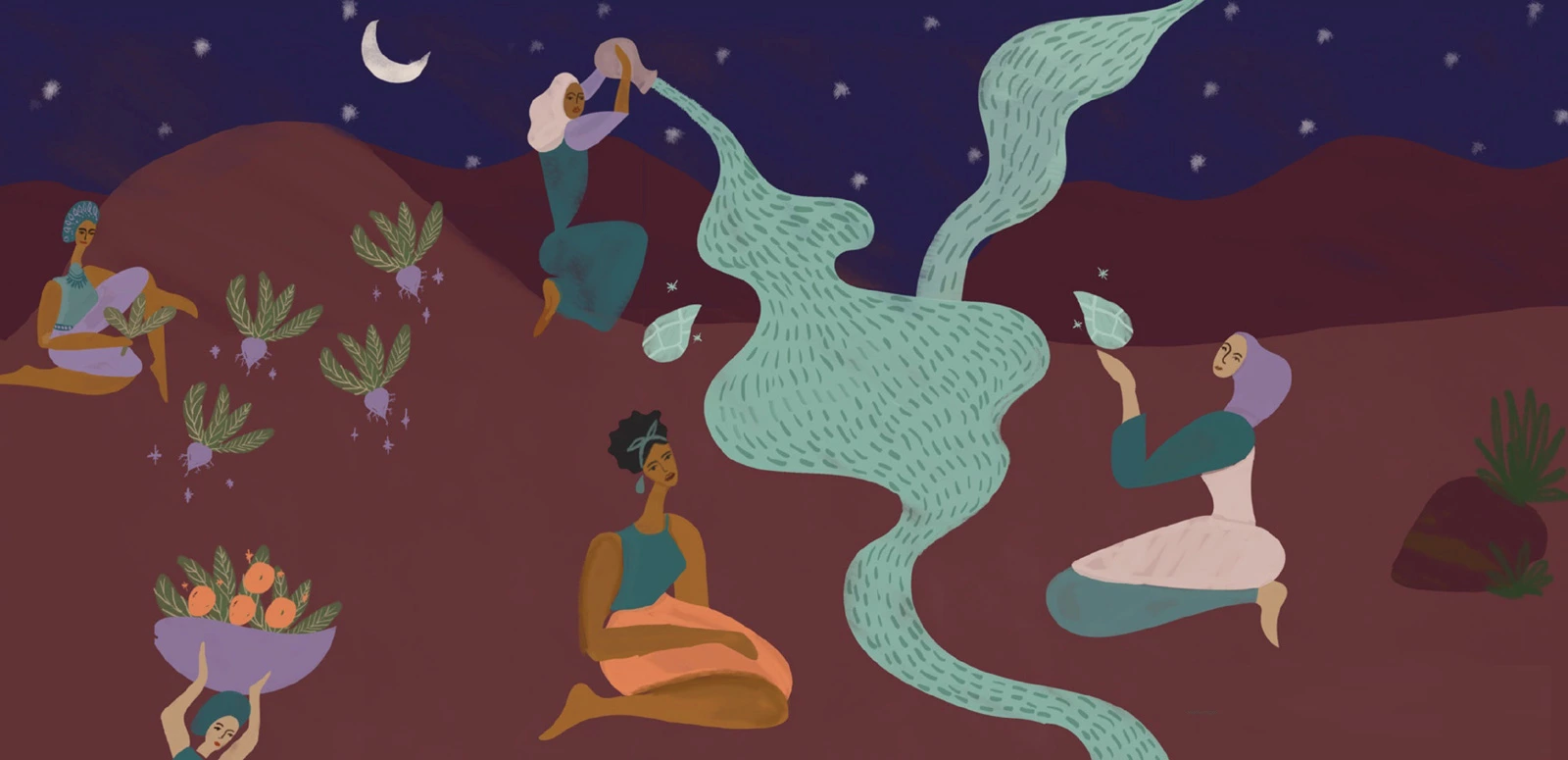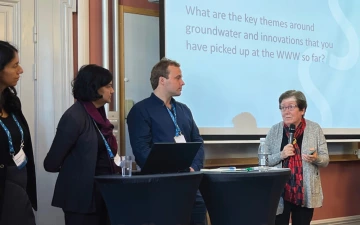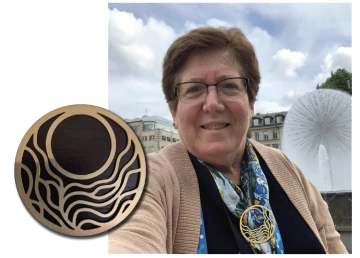
Source: Global Strategy Document, Women in Water Diplomacy Network
Illustration: Radhika Gupta
Stockholm World Water Week (WWW) is a highly regarded international conference, well known for bringing together diverse water experts from different parts of the world. This year’s WWW theme was Seeing the Unseen: The Value of Water.
I participated in part two of a three-part seminar on valuing groundwater organized by the Stockholm International Water Institute. Our session’s focus was Innovative groundwater management: From the ground to the sky. Three experts in Australian water management, who are listed below, and I collaborated on the presentation, “Water Storage to Maximize Aquifer Value in a Changing Climate.” Drawing from my co-authors’ knowledge of the Murray Darling Basin and my own Arizona experience, we offered the following findings:
- Increased climate variability increases the value of water storage.
- Enhancing aquifer storage can be a cost-effective water security strategy.
- Technical studies and pilot projects are needed, as are new policies and governance frameworks.
- The Arizona Water Banking Authority is an example of securing water supplies (in part) for times of drought.
- Groundwater quality protection and improvement are possible, including when recycled water is stored in aquifers.
- The value of aquifers is maximized when they are used to store critical water supplies that sustain communities and the environment.

Speaking at valuing groundwater seminar.
Photo: Oudi Kgomongwe
Our overall conclusion, drawn from our years of research and practical experience in groundwater recharge, was that there is great potential for aquifer storage, banking, and recovery to assist in meeting water policy goals globally.
World Water Week offers participants so many options that I faced hard choices in selecting sessions to attend. In fact, my session competed directly with the public award of this year’s World Water Prize by Sweden’s King Carl XVI Gustaf. I worried that no one would attend our session, but the room was almost full. Because the size of meeting rooms was limited, I found myself unable to find a seat in a few chosen sessions. The consolation was that, with all sessions livestreamed (and recorded), I could sit right outside the room listening with my earbuds. In person or by earbuds, I did attend some excellent sessions and would like to highlight some of my WWW experiences.
A key highlight was my participation in the Women in Water Diplomacy Network, which is an extension of the network formed for the Nile River Basin. It is so exciting to be included in this network as it expands into North America. The network held a two-day side meeting, culminating with the WWW release of the network’s strategy document, A Path Forward for Women, Water, Peace and Security: Women in Water Diplomacy Network Nile and Beyond Global Strategy 2022-2027. The strategy includes five pillars:
- Gender and Youth Empowerment in transboundary water decision making
- Peer-to-peer Learning, Capacity Development and Experience Exchange
- Research Cooperation
- Linkages to basin, regional and global processes
- Process Support (analysis; design, monitoring and evaluation; communications; and strategy and partnership development)

Water-themed clip worn by Women in Water Diplomacy Network members and supporters.
Released at the same time and included in the document was the 2022 Global Women in Water Diplomacy Network Joint Statement: ‘A Rising Tide’ of support for women in water diplomacy. This statement was read by representatives from the different regions of the network. Tanya Trujillo, Interior Department Assistant Secretary for Water and Science participated in the network’s marquis event, as did Canadian Commissioner Merrell Ann Phare of the International Joint Commission (US-Canada). Jennifer Pitt, National Audubon Society, Felicia Marcus, Visiting Fellow at Stanford University’s Water in the West Program, and Susan Daniel, Secretary for the United States Section of the International Joint Commission, also represented North America. Connecting to women – and men – from different parts of the world, all of whom are passionate about solving water challenges, was so meaningful. Network members and supporters made a huge splash by wearing a beautiful water-themed clip that was designed for the network and unveiled at WWW. Many people asked what it symbolized and where they could get one!
A second highlight relates to the emphasis throughout the conference on inclusive participation in water debates and dialogues. The session, “Thousands of Years of Lessons: Voices of Indigenous people,” emphasized that Indigenous people must be involved in deciding their rivers' futures. Speakers underscored the need for a systematic approach, full participation, capacity building, and intergenerational knowledge transfer. Another session, focused on Community Voices, involved the Australian Water Partnership. The Honorable Karlene Maywald, former South Australia Water Minister, whom I met last March in Dubai, facilitated some role-playing to address transboundary river water quantity and quality issues. As background, she summarized the Australian perspective on community and stakeholder engagement articulated by the Australian Water Partnership in Community Voices – a Summary. Because I think their six key principles for addressing water reform along with other water policies related to building water resilience, are universal and well-stated, I share them here:
- Leadership: Create “leaderful” communities and commit to inclusive, transparent, and well-resourced engagement with a wide range of stakeholders. In “leaderful” communities, everyone involved can be heard, listen, and play a part in the reform process. Leadership is shared because the resource is essential to the lives and livelihoods of all.
- Building Trusted Relationships: Provide a safe environment to build trusted relationships through exploration of values, culture, and conflict – people matter.
- Clarity of Purpose: Provide clarity on the reform purpose, roles, responsibility, and accountabilities.
- Problem Definition and Joint Discovery: Share power through knowledge exploration, problem definition and joint discovery of workable solutions.
- Time, Flexibility, and Windows of Opportunity: Allow for flexibility in time and process.
- Decision Making and Change Management: Demonstrate how decision making and reform implementation reflect the outcomes of the engagement process.
A final highlight relates to the value of in-person meetings where we can reconnect with people not seen for some time and meet others for the first time. While we have accomplished so much through virtual platforms, which enable us to work together without the monetary and time costs of travel, we must recognize that virtual interaction is not a perfect substitute for in-person experiences. I very much enjoyed my conversations over meals and in the hallways. I enjoyed seeing several representatives from Arizona and the U.S. speak about their exciting projects, some of which the WRRC has featured in Brown Bag webinars. Not surprisingly, I got some ideas for additional webinars while there! Most of all, I enjoyed the collegiality of interacting with and learning from so many people who focus primarily on working through partnerships to address significant water challenges.
Notes
My coauthors were Peter Dillon, CSIRO Land and Water and Flinders University, Australia, Declan Page and Dennis Gonzalez, CSIRO Land and Water, Australia, and John Ward, Mekong Region Futures Institute, Laos.
This September 2, 2022 article in The Water Diplomat provides a nice overview of the Women in Water Diplomacy Network.

